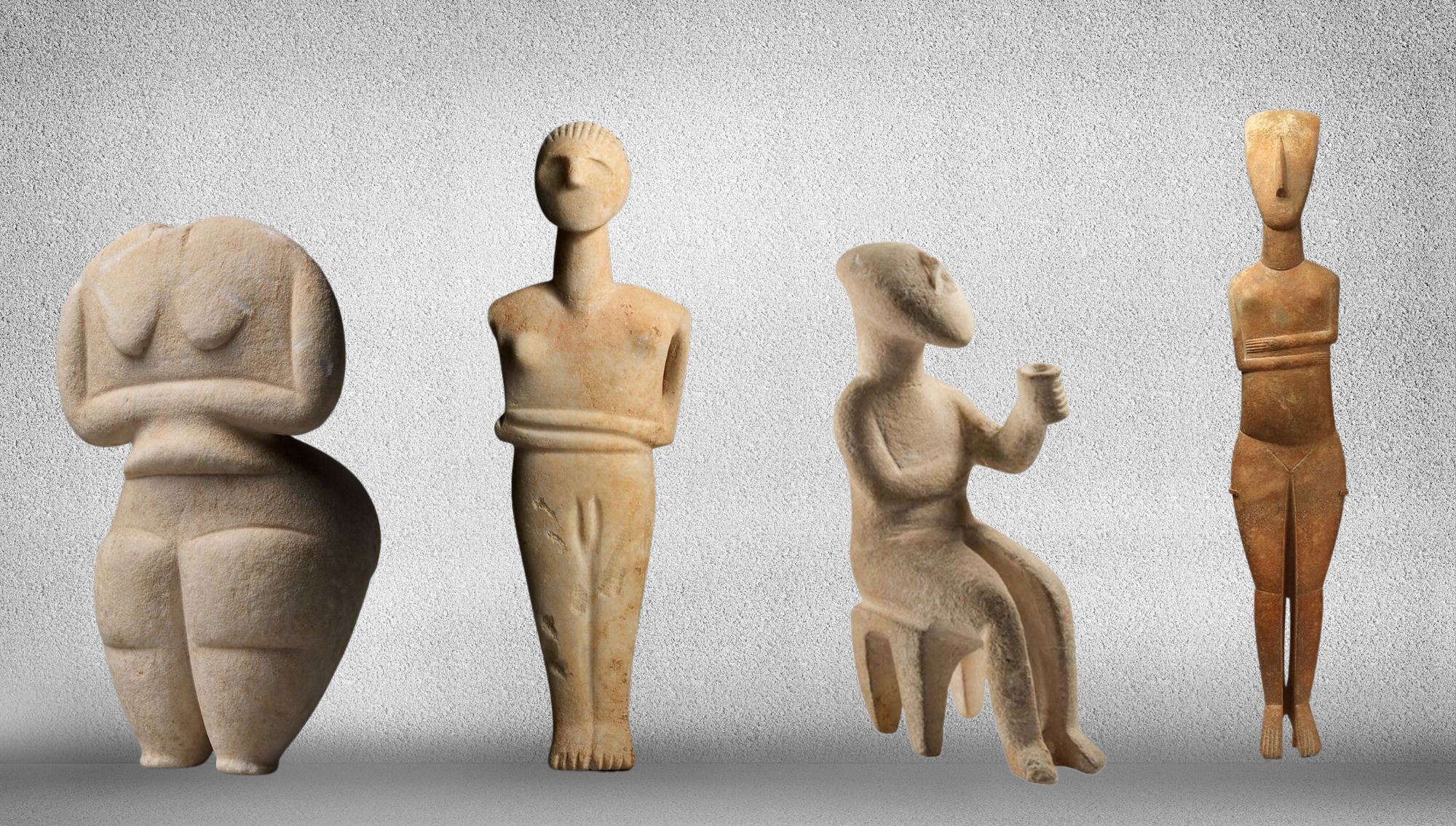Family
Polyamory Is Growing—And We Need To Get Serious About It
More people than ever are pursuing polyamorous, open, or swinging relationships.

We need to talk about polyamory. It’s the biggest sexual revolution since the 1960s. It’s surprisingly common among Millennials and Gen Z. It’s often misunderstood and stigmatized by mainstream monogamist culture. Some people think polyamory is the best way to integrate sexual freedom, honesty, openness, and commitment. Others think it’s an existential threat to Western Civilization.
We should take existential risks seriously. Global thermonuclear war, genetically engineered bioweapons, and artificial general intelligence could exterminate our species. But whenever I tweet about polyamory, my conservative followers react as if polyamory is a fourth existential threat. They view monogamy as the foundation of Western Civilization. Any threat to monogamy is, they think, a threat to love, marriage, family, culture, reason, nation, and gene pool. Are they right?
The Polyamory Revolution
More people than ever are pursuing polyamorous, open, or swinging relationships. With the growing number of polyamorous relationships, we need to get serious about analyzing the costs and benefits of polyamory—not just for individuals, but for families, cultures, and nations.
Sex-positive activists often argue that sexual relationships are matters of individual choice, and nobody else’s business. Yet sexual relationships can impose good and bad side-effects (“positive and negative externalities”) on children, communities, economies, civilizations, and future generations. Mating markets matter. Sexual ethics matter. Reproductive choices matter. Families matter. That’s why we evolved instincts to stick our noses into other people’s sex lives, and why human sexuality has often been the most controversial domain of human politics and religion.
So what is polyamory and how does it work?
Polyamorous or open relationships are usually based on “consensual non-monogamy“—the idea that relationships can be loving, committed, and serious, without being sexually exclusive. It’s a more libertarian approach to sexuality, in which people can negotiate custom relationships, like contracts between firms or treaties between countries, while still retaining some sexual sovereignty and freedom of mate choice. Polyamory takes freedom of association seriously—not just in social and political life, but in the sexual realm. If you can choose to have more than one child, more than one friend, and more than one work colleague, you should be free to choose more than one sexual partner.
Among Millennials and Gen Z, consensual non-monogamy often takes the form of polyamory, with people having multiple parallel relationships; among older people, it often takes the form of swinging among married couples. (In this essay, I’ll use “polyamory” and “poly” as umbrella terms for all kinds of consensual non-monogamy.)
Openness to polyamory is already common among younger American adults:
- About 4 percent to 5 percent of all adults are currently in open or poly relationships;
- About 20 percent have tried some kind of open or poly relationship at some point;
- Among adults aged 18-44, 17 percent have had sex with someone else with the consent of their partner, up from 9 percent among adults aged 45-54;
- About 28 percent of adults say it is not natural for human beings to be faithful to only one person;
- About 29 percent of adults under 30 consider open relationships to be morally acceptable—compared to only 6 percent of adults over 65.
Polyamory is still a smallish subculture, but it is already much more common than being gay or lesbian. Americans think that about 24 percent of people are gay or lesbian, but the true percentage is closer to 2 percent. Thus, among America’s 83 million Millennials, 24 million are sympathetic to poly ideals, 17 million have tried poly, and 4 million are currently poly—compared to 3 million who are gay/lesbian. When I taught my university course on “Polyamory and Open Sexuality” in 2017, my undergrads were astonished that being poly was more common than being gay—even though most of them personally had more poly friends than gay friends.
Why Polyamory Is Hard
Poly relationships can work very well for some people. I’ve been in a successful open relationship for five years, and we’re getting married next month. Poly people report relationship satisfaction as high as or higher than monogamous people, often with different partners fulfilling different needs. But poly relationships are hard for several reasons.
Poly people have to learn to manage their sexual jealousy, by minimizing it and/or eroticizing it. Sexual jealousy has deep evolutionary roots, with clear adaptive functions in increasing paternity certainty, protecting pair bonds, and reducing STI transmission. Jealousy is instinctive and hard to manage. But lots of emotions that we learn to manage also have deep evolutionary roots. Kids learn to manage their anger, teens learn to manage their moodiness, and married people learn to manage their irritability, but many adults have never seriously tried to manage their jealousy.
Poly people also have to negotiate and nurture their custom relationships without having good role models, social norms, sexual scripts, or social support. Polyamory is almost invisible in mainstream media, and the few reality TV shows about polyamory play up the “poly drama” rather than exemplifying good relationship skills. Also, too many poly advocates do so much progressive virtue-signaling that they’re not seen as credible spokespeople by mainstream folks. Most doctors, therapists and mental health professionals are ignorant about poly, and many are biased against poly relationships, so aren’t much help to poly people seeking guidance.
Further, poly people need to manage trade-offs in time, energy, money, and mating effort among multiple partners, who are also trying to do the same with their own partners. Naïve polyamorists say “Love is infinite,” and the polyamory logo is a heart with an infinity symbol. However, true romance requires costly commitment-signals, so every concrete manifestation of love involves limited resources. Love may not be the zero-sum game that monogamists often imagine, but it still involves real costs, real trade-offs, and sometimes real heartbreak.
Finally, there’s the intense social disapproval of polyamory, which is heavily stigmatized—more stigmatized in some ways than any sex, race, class, religion, political attitude, or sexual orientation. Conservative and religious people are especially hostile to polyamory. Poly also lacks the legal status of being a protected minority, so poly people can be denied housing, jobs, and child custody just for being poly. The political status of polyamory is comparable to that of homosexuality before the 1969 Stonewall riots that launched the gay rights movement.
Many people try open relationships without doing their research, and they often fail. Poly doesn’t have a civilizational support system yet. We’re not brought up to know how it could work. It’s tough to be gay in a straight world; it’s tough to be a sex-positive woman in a slut-shaming world; it’s tough to be polyamorous in a monogamist world. Imagine if your culture’s norm was polyamory, and you were trying to invent monogamy from scratch, without any of monogamy’s religious, legal, cultural, or media infrastructure. You would probably have a high failure rate too.
Other poly people do their research, read blogs and books, find like-minded friends and mentors, join poly networks, and practice their relationship skills. They often find that poly relationships offer the best of both worlds—the long-term loving commitment of pair bonds, plus the excitement of sexual variety, the charm of recreational intimacy, and the power of social networking through threesomes.
In my academic research and popular science books, I’ve argued that a lot of human behavior is driven (unconsciously) by mating effort—the drive to show off our mental traits and moral virtues to attract sexual partners. These are costly signals, and we only bother to display them when they can yield mating payoffs. Monogamous exclusivity reduces those incentives. As mating effort gives way to parenting effort, traditional married couples often get lazy about their intellectual, social, and political lives. By contrast, open relationships incentivize people to stay healthy, fit, creative, and funny, because they’re always in the mating market.

The Benefits of Monogamy
Pair bonds go back millions of years in mammals, and at least two million years in our lineage. However, cultural institutions of monogamy seem to have developed only since the rise of Holocene agriculture and urbanization in the last 10,000 years, and they became civilizationally central only in the last couple of thousand years, as in ancient Greece and Rome.
Monogamous societies flourished. That’s no accident. It’s important to acknowledge that the only societies that have ever succeeded in becoming large-scale technological civilizations were the ones that adopted monogamous marriage as the gold standard for long-term pair bonds and family formation.
Of course, married people often had affairs, men visited sex workers, and elites often acted polygynous or polyamorous in secret, even as they promoted monogamy in public. But monogamy has, historically and normatively, been central to complex societies. So, is polyamory a serious threat to civilization?
Well, monogamy solved some specific problems that might not be as relevant anymore.
Monogamy increased paternity certainty—a man’s confidence that his kids are really his—thereby increasing paternal investment. If you know you’re the real dad, you’re likely to be a better dad. But with condoms, contraception, and paternity testing, this is less of a concern—at least at the rational level.
Monogamy reduced the spread of sexually transmitted infections that could undermine women’s fertility. However, STIs have become much less common over the last few centuries. STIs now are more easily avoided with vaccines, PReP, condoms, and safer sex, and are more treatable with medications. Poly people are generally very safety-conscious about STIs, and have infection rates no higher than monogamists.
Maybe most importantly, monogamy reduced the ability of high-status males to monopolize women, and helped to equalize mating opportunities. This decreased violent competition among males. Jordan Peterson has been especially vocal about the sexual-egalitarian and violence-reduction benefits of monogamy. Many “Red Pill” guys in the Manosphere are terrified that polyamory will expand the sexual underclass of male incels, but they usually confuse polyamory with polygyny. Polygyny makes it harder for lower-mate-value men to find partners, but polyamory actually makes it easier, because these guys don’t have to be good enough to be a woman’s primary partner. Also, as Steven Pinker has shown, aggression rates have already dropped a hundredfold in the last thousand years, and the state has gotten better at deterring violence with surveillance, police, courts, and jails. Some of the more neurotic polyamorists enjoy maximizing the “poly drama” in their lives, but it rarely leads to spousal homicide.
The Benefits of Marriage
Some of the benefits of monogamy (sexual exclusivity) are conflated with the benefits of marriage (socially validated, ritualized, long-term pair bonds), but the two served rather different civilizational functions.
Marriage customs helped reinforce commitment in pair bonds so couples stayed together while raising kids. These “commitment devices” and “public displays of connection” included costly marriage ceremonies with vows, witnesses, and emotionally powerful traditions, marriage laws and contracts that made divorce difficult and costly, and pro-marriage propaganda throughout our civilization, with many high-status married role models and religious justifications.
It’s important not to confuse these marriage customs with monogamy itself. Many polyamorous people get married and raise kids. They can take advantage of all the commitment devices that help maintain long-term pair bonds, without buying into the sexual exclusivity. (My fiancée and I have been doing that during months of wedding planning.) Commitment doesn’t require exclusivity, and exclusivity doesn’t guarantee commitment. At least in principle, marriage isn’t restricted to monogamy, any more than it’s restricted to heterosexuality. (I’m not arguing here for “plural marriage” among multiple people, only for open marriage among pair-bonded couples; plural marriage raises a whole other set of legal, familial, and cultural complications.)
Monogamous marriages can be wonderful, and bring many benefits, but they can also be frustrating, boring, and fragile. They often become asexual, and many married people are no longer hot for their spouses. Monogamously married people can get lazy about their personal habits, career ambitions, and social networks. When “infidelity” is catastrophized as the deepest betrayal that can possibly befall a married couple, a single affair can blow them apart. The claim that “50 percent of marriages end in divorce” is overblown—the divorce rate is much lower among college-educated people who marry when they’re older than 24, who aren’t pregnant when they marry, who have decent jobs, and whose spouses are the same race and religion. Still, monogamous marriage has its problems, as every observant human has learned.
Open marriages can be more resilient and exciting. Interactions with “secondary partners” can put the spark back into the marriage bed. Polyamorous people have incentives to sustain their mate value—to stay more energetic, vivid, and attractive. Since polyamorists communicate more openly about their sexual fantasies, porn use, flirtations, and other partners, they learn through experience that their partner can feel desire for others, and it doesn’t necessarily threaten their family.
Just as polyamory can learn a lot from monogamous marriage traditions about how to sustain long-term, pronatalist pair-bonds, monogamous marriages can learn a lot from poly relationships about communication, honesty, jealousy-management, and how to keep the sexual spark alive.

How to Avoid a New Culture War over Sexuality
I don’t know what percentage of Americans will adopt open relationships in the next twenty years, but it will almost certainly increase. To avoid a new “culture war” over sexuality, I think it’s important for conservatives and religious people to understand that polyamorous openness can be integrated with marital commitment, family values, and pronatalism. It’s not helpful when the Catholic League, for example, denounces the new American Psychological Association’s Consensual Non-Monogamy Task Force (which I’m on), as evidence that the APA is “having a mental breakdown.” Historically, married Christians have been prominent in the swinger community, and have found ways to integrate sexual variety, family values, and Christian spirituality.
Monogamy and polyamory also have a common enemy: the impulsive, short-term, alcohol-fueled casual sex culture of bars, clubs, frat parties, and Tinder. It’s possible to make a compelling ethical case for monogamy. It’s also possible to make a compelling ethical case for polyamory. I don’t think it’s possible to make a compelling ethical case for a sexual culture centered around drunken hook-ups. (Casual sex can be great, but the current American culture around casual sex rarely partakes of that greatness.)
The trouble is, most poly people are on the far-Left politically, and are atheist or New Age spiritually. Many polyamorists see poly as part of a broader progressive movement to undermine religion, capitalism, patriarchy, and the gender binary. The Green polyamorists who catastrophize about global warming are often anti-natalist and anti-family. Given the stigma against poly, the poly people willing to appear on TV are often young, eccentric “poly activists,” rather than mature professionals who happen to be poly. This makes open relationships look like some bizarre, unsustainable variety of Leftist virtue-signaling. But it’s a mistake to think that’s all it is, for three reasons.
For a start, most middle-aged polyamorists (especially swingers) are middle-class professionals, who are centrist or conservative. Many are religious. They offer an existence proof that sexual exclusivity is not required for long-term relationships, and that familial responsibility can co-exist with some degree of sexual freedom.
Also, most marriages between gay men are open to some degree—they’re ‘monogamish’ (as Dan Savage says), not monogamous. If gay marriages can handle some openness, maybe straight marriages can too.
Finally, research by Justin Lehmiller shows that conservative people have more sexual fantasies about threesomes and group sex than liberal people do—the desire for openness is there, but it isn’t acted on or shared with the partner. This creates secrecy, hypocrisy, and emotional distance in conservative marriages that could be resolved through a bit more openness.
Polyamory is coming. We could continue to ignore it. We could continue confusing libertarian polyamory with oppressive patriarchal polygamy. We could continue conflating ethical non-monogamy with unethical hook-up culture. We could misconstrue poly as an existential threat to Western Civilization, as if it’s more dangerous as nuclear war or Artificial Intelligence.
But maybe we should be smarter about how we handle polyamory. Polyamory, at best, offers a new ethical vision of sexual relationships that prioritizes radical honesty, sexual sovereignty, freedom of association, and social networking. Poly is, admittedly, an experiment. Polyamory would not have been possible before the invention of contraception, condoms, STI testing, the evolutionary psychology insights needed to manage sexual jealousy, and the Google Calendar app to manage dates.
Polyamory Needs Your Guidance
Here’s the thing: polyamory’s potential as a social experiment is being squandered by many current polyamorists—many of whom belong to the radical Left politically. Widespread, sustainable poly may not be possible without some wise and sympathetic guidance from conservatives, centrists, libertarians, Christians, and other good folks who may think, at first glance, that poly seems insane or evil.
Poly needs libertarians who can explore how freedom of choice, freedom of association, and the non-aggression principle can extend into the realm of sexual relationships. Poly needs “TradLife” pronatalists willing to find common ground with the communitarian child-rearing favored by many poly families. Poly needs Christian ethicists who can imagine a more romantic interpretation of “Love they neighbor as thyself” (Matthew 22: 39). Poly needs centrists who recognize that poly relationships are powerful ways to build bridges across partisan divides.
Polyamory is going mainstream, like it or not. You already have poly neighbors and coworkers, whether you know it or not. Many of your own kids are likely to end up in poly relationships. Many of you might end up in poly relationships, sooner or later.
This won’t be a personal or national catastrophe. It won’t be an existential threat to Western Civilization. But if we don’t figure out how to integrate polyamory with our best traditions of commitment, marriage, parenting, and family values, there will be a culture war about sexuality that makes the 1960s look like the calm before a category 5 hurricane.






